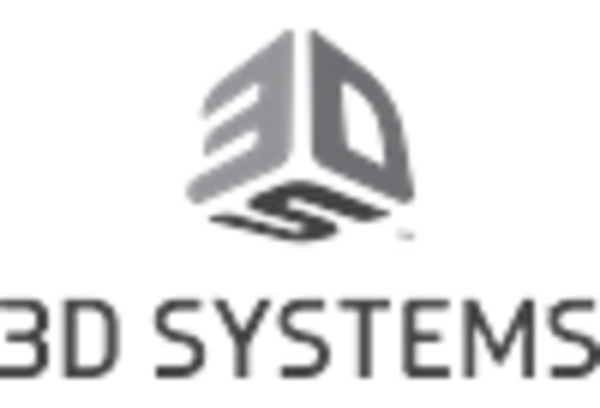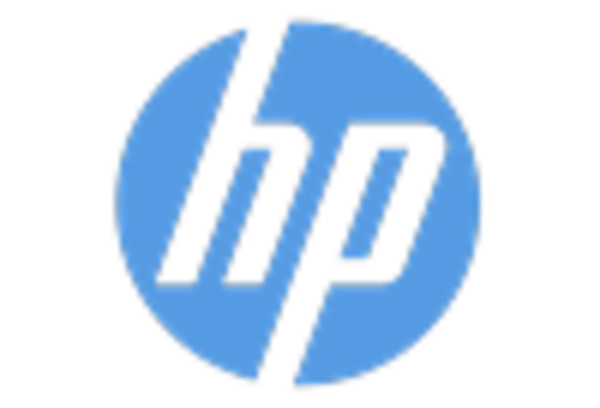Increased Investment in R&D
Investment in research and development is a critical driver for the 4D Printing Market. Companies and institutions are allocating significant resources to explore the potential applications of 4D printing technology. This investment is not only fostering innovation but also accelerating the commercialization of 4D printing solutions. According to recent data, R&D spending in the additive manufacturing sector has seen a steady increase, with projections suggesting that this trend will continue. As more organizations recognize the potential of 4D printing, the market is expected to expand, leading to the development of new applications in fields such as healthcare, aerospace, and automotive. This influx of funding is likely to enhance the competitive landscape of the 4D Printing Market.
Advancements in Material Science
The 4D Printing Market is experiencing a notable transformation due to advancements in material science. Researchers are developing smart materials that can change shape or function in response to environmental stimuli. This innovation is expected to enhance the capabilities of 4D printing, allowing for the creation of more complex and functional products. For instance, materials that can self-assemble or adapt to temperature changes are becoming increasingly viable. The market for smart materials is projected to reach substantial figures, indicating a growing interest in their applications across various sectors. As these materials become more accessible, the 4D Printing Market is likely to witness a surge in demand for products that leverage these capabilities.
Growing Demand for Customization
The demand for customization is a significant driver in the 4D Printing Market. Consumers and businesses alike are increasingly seeking tailored solutions that meet specific needs. 4D printing technology offers the unique ability to create products that can adapt over time, providing a level of personalization that traditional manufacturing cannot achieve. This trend is particularly evident in sectors such as fashion, where customized clothing and accessories are gaining popularity. Market data indicates that the customization trend is expected to grow, with consumers willing to pay a premium for personalized products. As this demand continues to rise, the 4D Printing Market is likely to evolve, offering innovative solutions that cater to individual preferences.
Integration with Advanced Technologies
The integration of 4D printing with advanced technologies is a key driver for the 4D Printing Market. The convergence of 4D printing with artificial intelligence, machine learning, and the Internet of Things is creating new opportunities for innovation. These technologies can enhance the design and production processes, allowing for more efficient and intelligent manufacturing solutions. For example, AI can optimize the design of 4D printed products, while IoT can enable real-time monitoring and adjustments during the printing process. This synergy is expected to lead to the creation of smarter products that can respond dynamically to their environments. As these technologies continue to evolve, the 4D Printing Market is likely to see a significant transformation, paving the way for new applications and business models.
Sustainability and Eco-Friendly Practices
Sustainability is becoming a pivotal concern in the 4D Printing Market. As environmental awareness grows, there is an increasing push for eco-friendly manufacturing processes. 4D printing technology has the potential to reduce waste and energy consumption compared to traditional methods. By utilizing materials that can be recycled or that have a lower environmental impact, the industry can align itself with global sustainability goals. Market analysts suggest that companies adopting sustainable practices are likely to gain a competitive edge, as consumers increasingly favor environmentally responsible products. This shift towards sustainability is expected to drive innovation within the 4D Printing Market, leading to the development of greener technologies and practices.
















Leave a Comment